7 Strange Species Of Frogs And Toads
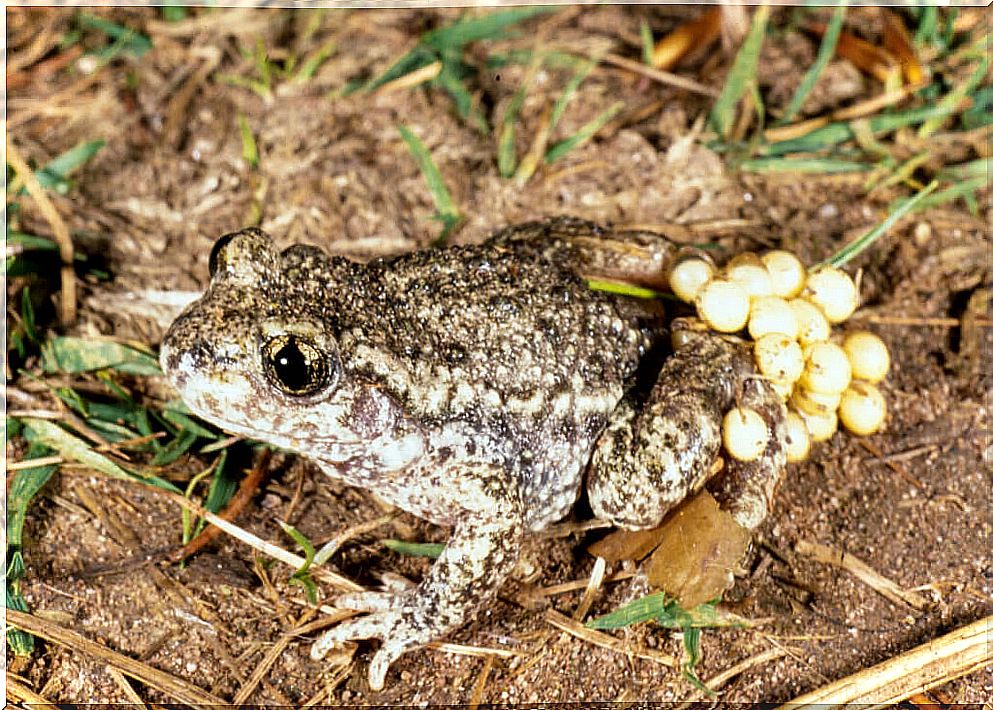
Frogs and toads have inhabited the planet for millions of years. They appeared long before the dinosaurs and are still very relevant in almost all ecosystems on the planet, especially in humid environments or with abundant water sources.
This long period of evolution allowed frogs and toads, also known as anurans, to diversify into really strange species. Although they look like slow and resourceless animals, they managed to stay on the planet for centuries.
Although all frogs have 4 legs and no tail, their other aspects can vary greatly. If you want to learn the most relevant traits of some of the strangest species of anurans, read on.
The 7 Most Unusual Species of Toads and Frogs
Today, more than 7000 species of anuran amphibians have been discovered. Most of them are found in the tropics, but several taxa can be found on every continent except Antarctica. We present some of the most peculiar toads and frogs.
1. Common Midwife Toad ( Alytes obstetricans )
This little plump frog has one of the rarest reproductive strategies among amphibians. Typically, these animals reproduce in water, where they lay their eggs directly.
However, common midwife toads breed on land. After that, the males carry the eggs on their backs and hind legs and transport them with extreme care until hatching, when they are taken to a body of water that meets the right conditions. This process can take more than a month.
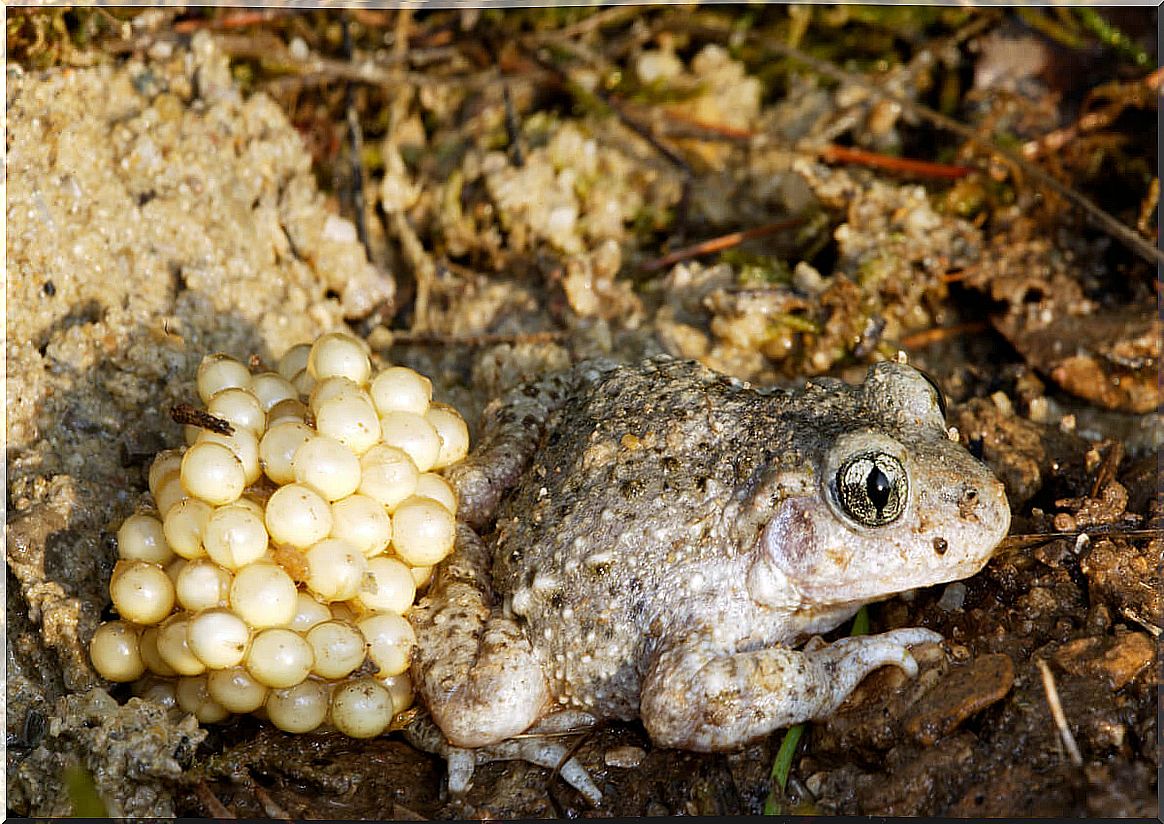
2. Nasikabatrachus sahyadrensis
This frog is endemic to India, was described in 2003 and has one of the strangest aspects of all amphibians. N. sahyadrensis stands out for its swollen, muscular body, thick legs and tiny cone-shaped head. Plus, it’s totally purple.
The peculiar morphology of this anuran is due to its habits. This purple frog spends most of its life underground and only emerges to breed during seasonal monsoons.
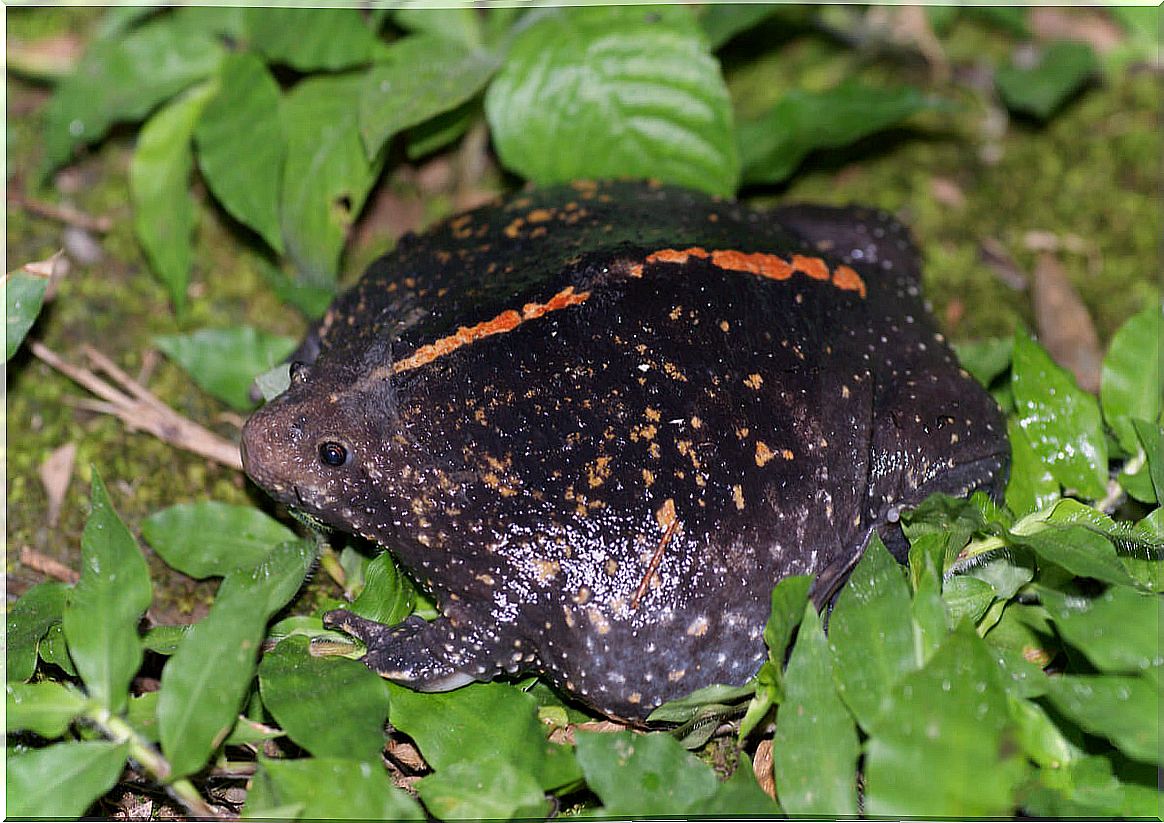
3. Kambo frog ( Phyllomedusa bicolor )
While most toads and frogs are found in freshwater bodies or on the ground near these locations, kambo frogs spend their lives in the treetops of the American rainforests.
In addition to being magnificent climbers, these frogs are capable of secreting a waxy substance with which they cover the entire skin. This compound is insulating and allows them to live away from water without drying out. In addition, it also contains toxins to defend against predators.
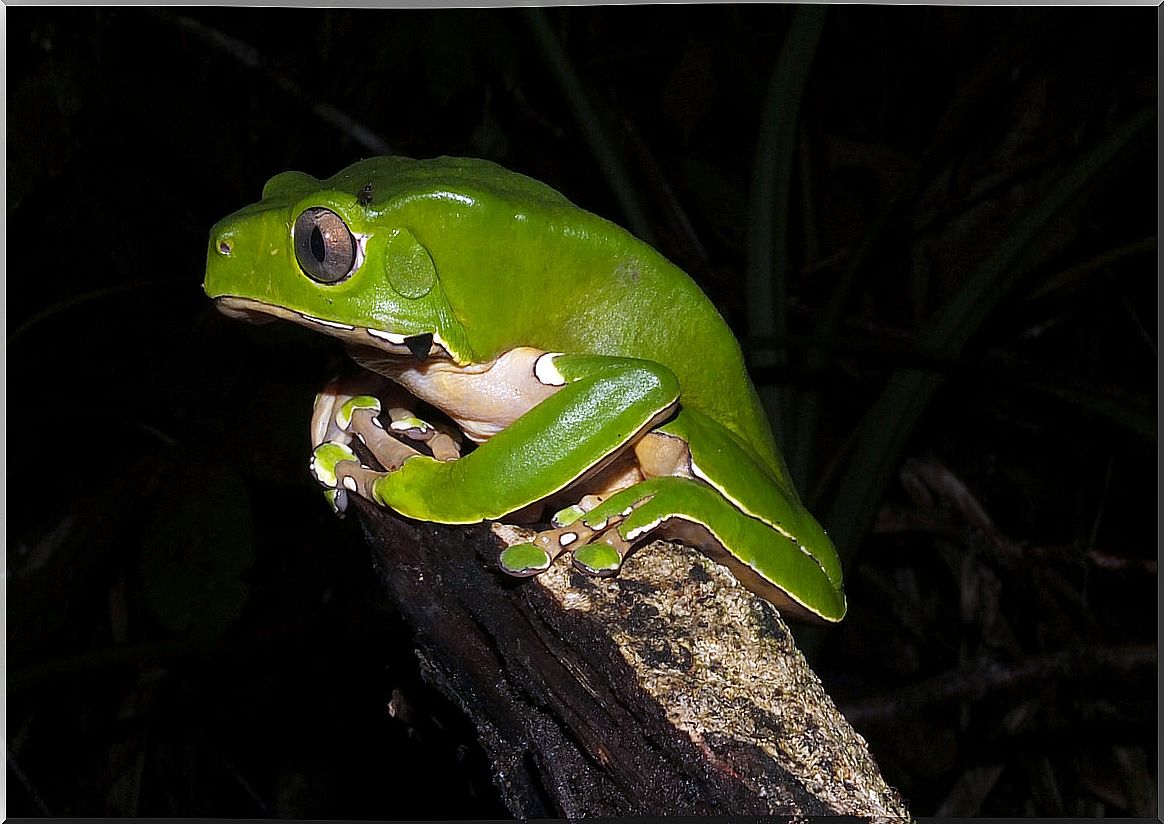
4. Hairy toad ( Trichobatrachus robustus )
This muscular-looking African frog has several unique adaptations. Males have long, thin extensions, very similar to hair, on the sides and hind legs.
These lumps are not real hairs, which only appear in mammals, but extensions of the skin and circulatory system that can improve oxygen absorption during cutaneous breathing. Thus, they function as a kind of gills.
Furry frogs have another trick up their sleeve: they are able to break bones in their fingertips, so their sharp splinters pierce the skin. Thus, a kind of pointed claws emerge from the most superficial layer of their skin when they feel threatened.
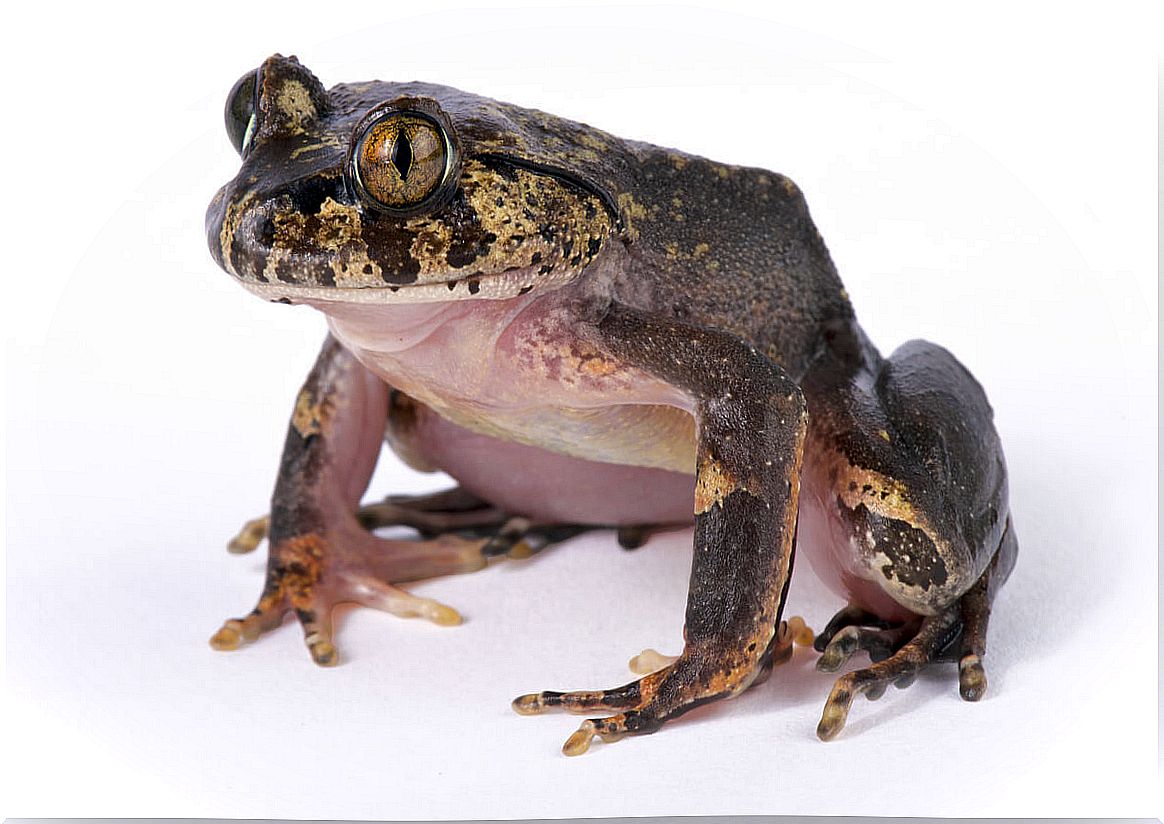
5. The Breviceps macrops species
Many toads and frogs are chubby, but none as plump as this species. These little animals are really spherical, with big, golden, wide eyes and very short legs.
B. macrops is only 4 or 5 centimeters long and lives on the desert coasts of southern Africa. One of its most striking features is the high-pitched squeak, similar to that of a rubber toy.
6. Toad of Suriname ( Kite kite )
This South American frog is one of the most surreal. It looks like a fallen leaf, with an incredibly flat brown body, an arrow-shaped head, barely perceptible eyes, and powerful hind legs with long, webbed fingers.
This frog is fundamentally aquatic and has a reproductive process unique in the animal kingdom. After copulation, eggs are placed on the female’s back.
There they spend the larval period — isolated under the mother’s skin — until they hatch and come out, already like little frogs. This method is shocking to humans, but it effectively protects the chicks from predation.
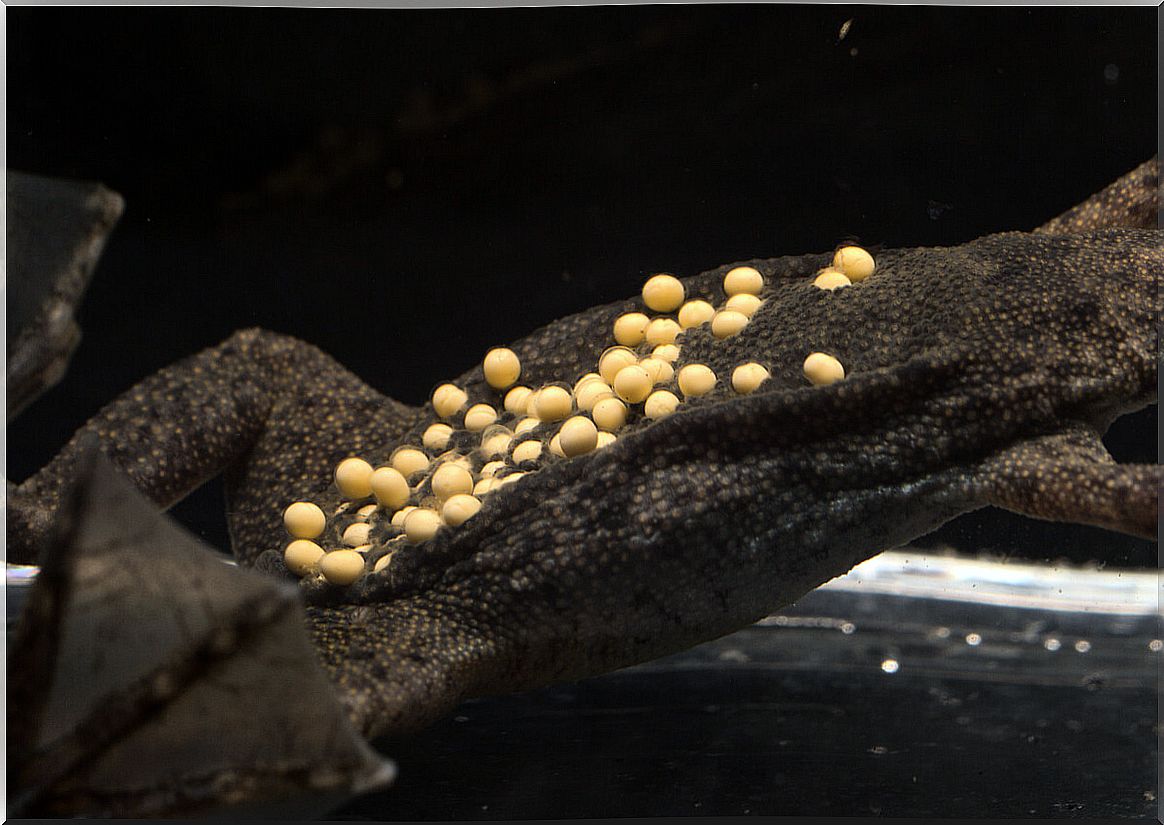
7. The Oreophrynella nigra species
This tiny frog, which grows only 2 or 3 centimeters, exists only in the mountainous regions of the Guyana Shield in Venezuela. Its appearance, very black and rough, resembles tar, but its color is not the most curious aspect of this animal.
O. nigra has a unique anti-predatory strategy, adapted to its alpine habitat. When threatened, this frog curls up and lets itself roll down the slope, bouncing off the rocks until it reaches safety. The animal does not get hurt with this strategy and manages to escape its main predators: tarantulas.

These are just some of the most fascinating species of anurans. New amphibians are constantly being discovered, but unfortunately a large percentage of them are in danger of extinction. As it turned out, these animals are full of peculiarities, in addition to being essential for their ecosystems. It is essential to work on its conservation.








